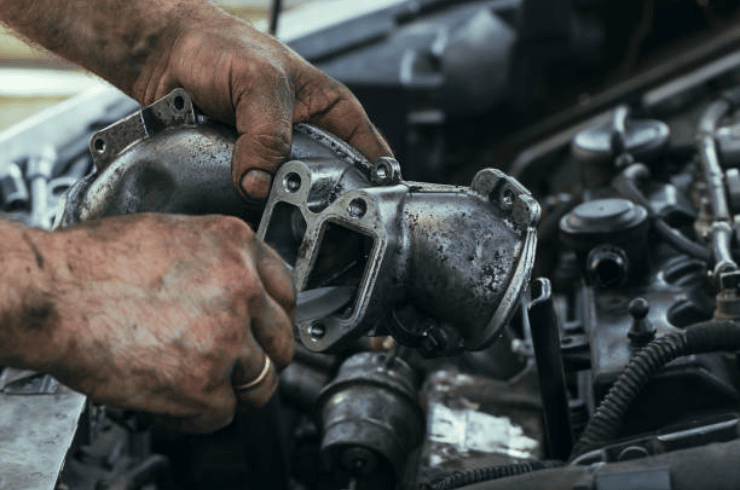What Is the Exhaust Gas Recirculation (EGR) Valve and How Does It Work?
The EGR valve plays a vital role in reducing your vehicle’s exhaust emissions by recirculating a portion of exhaust gases back into the engine’s intake manifold. This process allows the engine to burn these gases again, effectively lowering harmful emissions. At Nationwide Mechanics, we connect you with trusted mobile mechanics who can inspect and replace your EGR valve conveniently at your location.
Keep in Mind
During the EGR valve replacement, it’s important to inspect the vacuum hoses connected to the valve. Cracked or leaking vacuum hoses can prevent the EGR valve from functioning properly and may require repair or replacement.
How the Service Is Performed
- Scan the vehicle’s computer system for trouble codes
- Inspect all vacuum hoses related to the EGR valve
- Test the EGR transducer functionality
- Check that the EGR port is clear of blockages
- Remove and replace the faulty EGR valve
- Clean carbon deposits from the EGR pintle
- Clear diagnostic trouble codes and test the valve’s operation
Our Recommendation
Performing an air induction or carbon cleaning service every 50,000 miles helps prevent sludge and carbon buildup in the air intake system. Regular oil changes also contribute to minimizing engine sludge and maintaining EGR valve health.
Common Symptoms Indicating EGR Valve Replacement
- Check Engine light is illuminated
- Noticeable loss of engine power
- Rough running engine, including shaking, stumbling, or stalling
Importance of This Service
The EGR valve is essential for recycling exhaust gases, reducing emissions, and helping your vehicle meet emission standards. Without a properly functioning EGR valve, your vehicle will not recycle exhaust gases effectively, resulting in higher emissions and likely failure of emission inspections.




